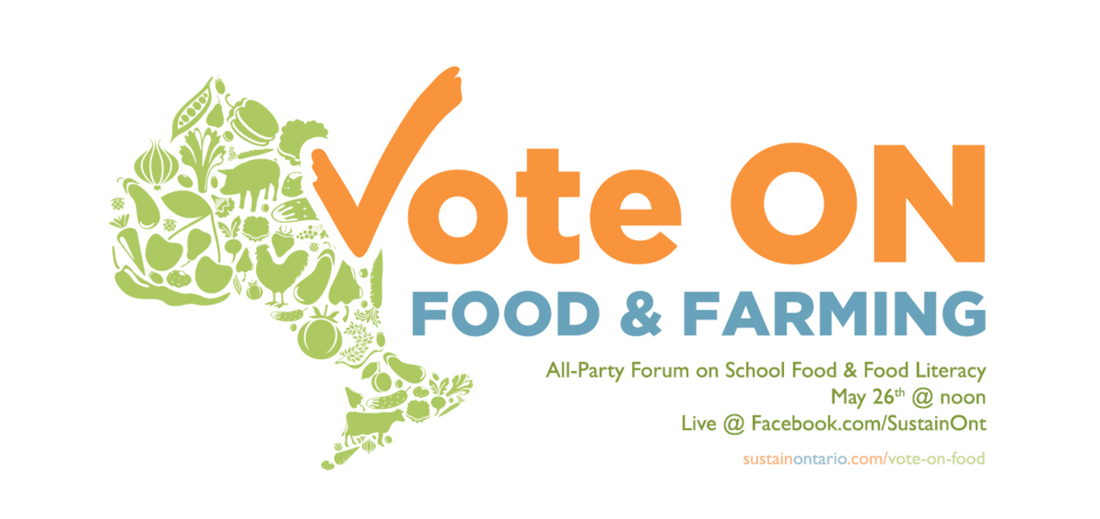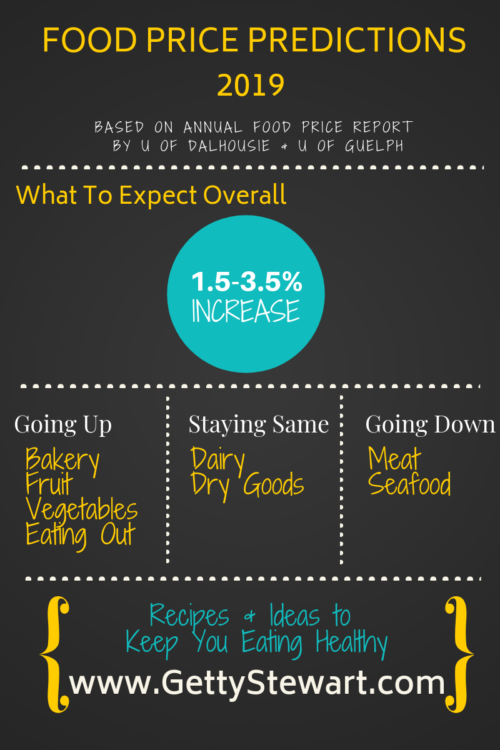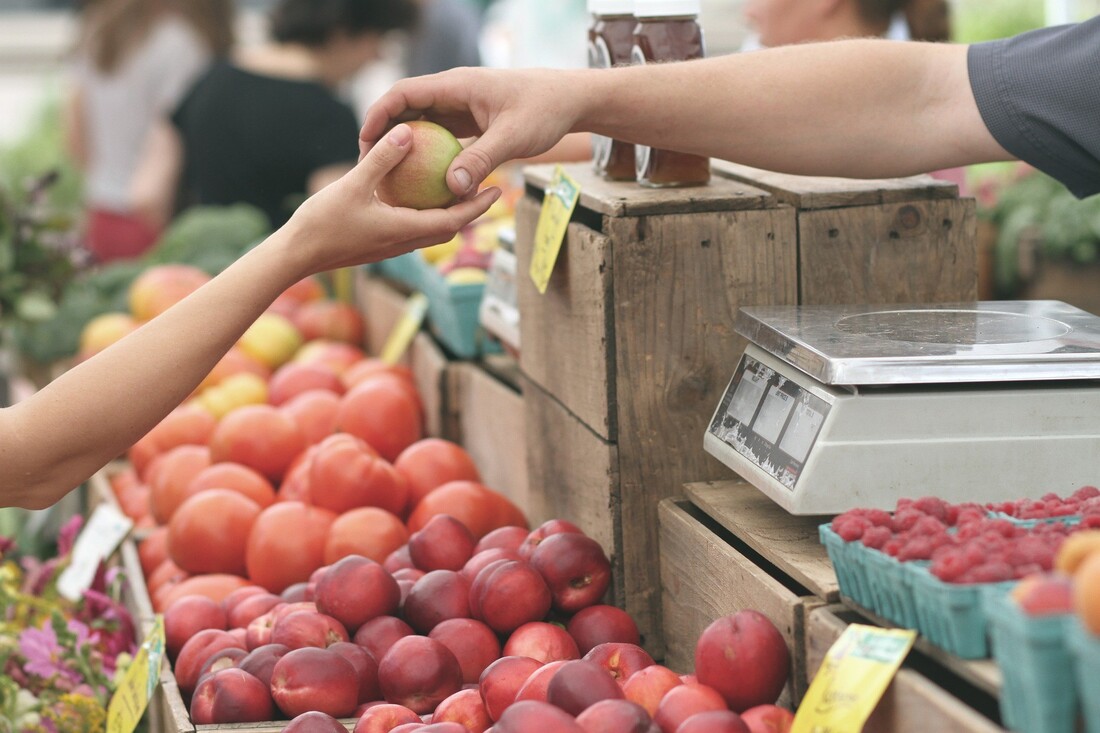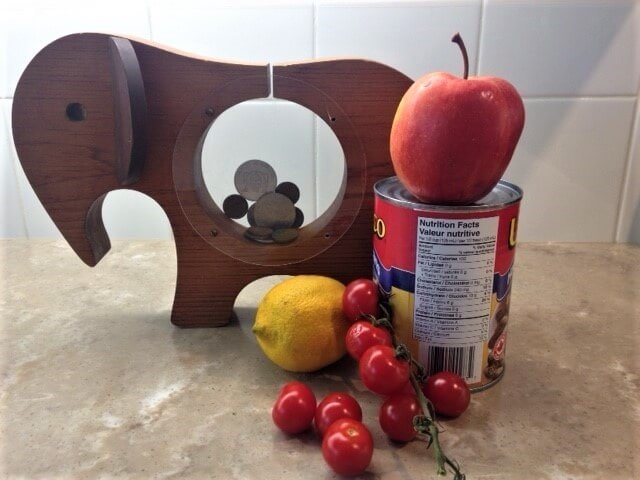|
Original post from The Toronto Star. School meals and food literacy — our knowledge and skills regarding food — are not partisan issues. We’re counting on all parties to act together. By Peggy O’Neil and Alicia Martin (Contributors) All four of Ontario’s main political parties are showing leadership when it comes to school food and “food literacy” — our knowledge and skills in relation to food. This is timely, since the federal government recently committed $1 billion over five years to developing a national program for nutritious meals in schools. And since 2020, Ontario’s Progressive Conservative government has worked to integrate food literacy into the province’s school system. As researchers who study the impacts of school food programs and food literacy, we are excited about this momentum. Food literacy provides young people with tools to actualize their health and well-being and to participate in food systems. Access to nutritious food supports the well-being of children and youth, and helps make sure they are ready to learn. In October 2020, PC MPP Daryl Kramp gained wide support for introducing Bill 216, the Food Literacy for Students Act, which proposed making “hands-on skills learned in kitchens and gardens” a requirement from grades 1-12. While the bill sailed through first and second readings, further readings stopped when the government was prorogued in September 2021. Nonetheless, Kramp and the ministry of education ensured food literacy was incorporated into the revised science and technology curriculum for grades 1-8 and the new Grade 9 science course, and have spoken about their commitment to reintroducing Bill 216. On May 26, Sustain Ontario, Brescia University College and the Coalition for Healthy School Food hosted an all-party forum on school food and food literacy. We asked candidates how they would: advance food literacy as mandatory for grades 1-12; strengthen the conditions for experiential food literacy education; address Ontario’s annual investment in the Student Nutrition Program to accommodate rising food costs and greater demand; and work with the federal government on a national, universal healthy school food program. We were pleased to be joined by candidates from Ontario’s Green, Liberal and NDP parties. All were enthusiastic about the topic and emphasized that school meals and food literacy are issues that cross party lines. The candidates spoke to the need for more education about food and healthy eating, and the necessity of teacher training and funding for infrastructure. They also spoke about the valuable school food and food literacy programs in their ridings. In their party platform, the Greens have committed to “enhanced curriculum content on critical environmental topics such as food literacy and climate change” and to “implement a province-wide nutritious school lunch program.” The Liberals have committed to “providing a free Ontario-grown breakfast for every K-12 student who needs one by expanding the Student Nutrition Program.” The NDP platform makes commitments to invest in and support the broader school system, especially the environment. As Victor Hugo once wrote, nothing is stronger than an idea whose time has come. We believe the time has come for ideas about school food and food literacy. We are counting on all parties to act together for the health and well-being of our students, and for Ontarians to consider these important issues during the upcoming election. Peggy O’Neil is an assistant professor of food, leadership and social change at Brescia University College. Alicia Martin is a PhD candidate in geography at the University of Guelph.
8 Comments
Original blog post from Rosie Schwartz, RD Where is food literacy headed for the students of Ontario?
We almost had it – legislation to teach critical life skills to Ontario students. Bill 216 – Food Literacy for Students Act, 2020 was to include the following: “The Education Act is amended to provide that curriculum guidelines shall require that courses of study be developed in experiential food literacy education and healthy eating for every grade from grade 1 through grade 12.“ In order to obtain their high school diplomas, students needed to learn about all aspects of food – from health and nutrition and food preparation skills but also about sustainable food systems, food production, food security and food safety. Bill 216 had unanimously passed second reading and, with its overwhelming support, seemed to be on its way to its final reading and Royal Assent. But then the premier prorogued the legislature in September 2021 which meant the bill had to be re-introduced and started again from scratch. A lot of work had already gone into developing a draft curriculum and as a result, was supposed to be re-introduced in February, 2022. But since the legislation wasn’t about cars and highways and actually promotes saving farmland, our government just didn’t get around to it. In March of this year, they did, however, include some changes to the science curriculum in various grades and while it was a start, it came nowhere near what Bill 216 would have accomplished. The Ontario Coalition for Healthy School Food, which involves national and provincial health, education, and indigenous organizations including the Ontario Home Economics Association (OHEA) has been working tirelessly to raise awareness about the importance of food and nutrition programs and food literacy education in Ontario schools. In a press release, OHEA states, “Connecting children and youth with healthy food, through school meals and education, has tremendous potential to improve the future of our province. Studies show that children and youth learn better when they are well-nourished and not hungry. Providing healthy and culturally appropriate food in school programs and teaching about growing, selecting, preparing, eating, and valuing food can play a critical role in promoting health and reducing chronic disease while strengthening Ontario’s economy and supporting the agri-food sector.” Next week on June 2, the people of Ontario go to the polls. And we need our candidates to speak up and make a commitment to the youth of Ontario. So what do the different political parties think about these issues? Together with Sustain Ontario, another province-wide, cross-sectoral alliance that has also been actively involved in promoting healthy food and farming, the Ontario Coalition for Healthy School Food and Brescia University College, they are providing an opportunity to find out at a virtual all-party event which will be live-streamed on Facebook. If you can’t watch it live, it will be available for viewing afterwards. The event will take place on Thursday, May 26th at 12 noon – 1 p.m. ET. The party leaders have appointed the following candidates as representatives. • Matt Richter, Green Party of Ontario, Parry Sound-Muskoka | 12 – 12:15 p.m. • Amanda Pulker-Mok, Ontario Liberal Party, Lanark-Frontenac-Kingston | 12:15 – 12:30 p.m. • Terence Kernaghan, Ontario New Democratic Party, London North Centre | 12:30 – 12:45 p.m. • TBD, Progressive Conservative Party of Ontario | 12:45-1 p.m. Candidates will answer the following four questions, provided to them in advance — If elected, what will you do to… 1. Advance food literacy as a mandatory part of the school curriculum for grades 1-12? 2. Strengthen the conditions for experiential food literacy education in Ontario schools? 3. Address Ontario’s annual investment in the Student Nutrition Program to accommodate rising food costs coupled with greater demand? 4. Work with the federal government on a national, universal healthy school food program? In our last election, about 57% of eligible voters cast a ballot. Our youth deserve better this time around. Watch the event and if you haven’t already cast your ballot, #VoteONFood. Where is food literacy headed for the students of Ontario? Read registered dietitian, Rosie Swartz's blog post here.
If elected, what will the parties do to support food literacy and healthy school food programs? Sustain Ontario invites you to join a virtual all-party event on Thursday, May 26th from 12 noon to 1 p.m. ET to hear from the following candidates that party leaders have appointed as representatives: Matt Richter, Green Party of Ontario, Parry Sound-Muskoka | 12 – 12:15 p.m. Amanda Pulker-Mok, Ontario Liberal Party, Lanark-Frontenac-Kingston | 12:15 – 12:30 p.m. Terence Kernaghan, Ontario New Democratic Party, London North Centre | 12:30 – 12:45 p.m. TBD, Progressive Conservative Party of Ontario | 12:45-1 p.m. The event will be live-streamed on Facebook and available for viewing afterward. It will be moderated by Dr. Peggy O’Neil of Brescia University College. Candidates will answer the following four questions, provided to them in advance — If elected, what will you do to…
To learn more about why we need healthy food and food literacy in Ontario schools, visit Sustain Ontario's 2022 #VoteONFood campaign here. This event is hosted by Sustain Ontario, the Coalition for Healthy School Food and Brescia University College. Aging is part of life and eventually life gets more challenging as we grow older. Aging not only affects the individual but the care giving family as well. Due to the rise in technology, we are seeing people live longer and at the same time experiencing a higher prevalence of chronic illness. Statistics Canada states that 8 million Canadians aged 15 and above have provided care for a family member or friend with a chronic health illness linked with aging (Statistics Canada, 2015). This connection releases hormones that improve mood, diminish stress, supports physical and emotional wellbeing for the aging (Smith et al., 2021). This early care giving relationship allows those cared for to feel part of the family and can be the least invasive situation for the care giving family allowing both to continue to thrive. At some point in time the individuals will need more assistance beyond the family’s capabilities and then the topic of burden of care may arise. This describes the physical, emotional, social and financial issues caregivers cope with everyday (O’Neill & Ross., 1991). Prolonged care giving periods can create consequences for the caregivers such as anxiety and depression which can lead to being more prone to illness due to a weakened immune system, obesity and other chronic illnesses (Womenshealth, 2015). Ask yourself what’s best for them? After all that’s the goal, right? This brings us to another stage in our lives, palliative. Palliative care improves wellbeing and aides in resilience of seriously ill patients as well as their families. This type of care brings in professionals from multiple disciplines such as physicians, personal support workers and chaplains for example (Shmerling, 2019). This type of care is personalized to the individual’s needs. This area improves quality of life in patients and their families, physical distress, discomfort and can help them live longer. Another area of palliative care is how to approach nutrition. The nutritional goal for palliative individuals is different than someone in the general population. These individuals experience higher amounts of fatigue and a sporadic appetite. They are battling a chronic illness which greatly diminishes their energy stores. Food options that are high in protein and calories will benefit the palliative care individual. Depending on the severity of the disease they could require the same amount of protein an endurance athlete consumes or more. Allow the individual to pick their favorite foods, desserts, or comfort foods, anything to get them to eat. In saying that, it’s important to still eat a variety of food to avoid deficiencies which could affect nerves and muscle and cause future complications (Government of South Australia, 2012). The goal is to ensure their last few weeks, months or even years are filled with happiness and social support. You may not feel like a superhero but that’s exactly how your loved one views you. Remember, take care of them and yourself. References: Government of South Australia. (2012). Diet and Nutrition in Palliative Care. Adelaide Hills Community Health Service. Retrieved from https://www.caresearch.com.au/Portals/20/Documents/Diet-And-Nutrition-Palliative-Care_AdlHillsCommHlthServ.pdf. O'Neill, G., & Ross, M. M. (1991). Burden of care: an important concept for nurses. Health care for women international, 12(1), 111–121. https://doi.org/10.1080/07399339109515931 Shmerling, R. (2019, November 12). What is palliative care, and who can benefit from it? Harvard Health. Retrieved from https://www.health.harvard.edu/blog/what-is-palliative-care-and-who-can-benefit-from-it-2019111118186. Smith, M., Segal, J., & Robinson, L. (2021, July 20). Family caregiving. HelpGuide.org. Retrieved from https://www.helpguide.org/articles/parenting-family/family-caregiving.htm#. Statistics Canada. (2015, November 27). Family caregiving: What are the consequences? Government of Canada, Statistics Canada. Retrieved from https://www150.statcan.gc.ca/n1/pub/75-006-x/2013001/article/11858-eng.htm. Womens Health. (2015). Caregiver stress . Office on Women's Health. Retrieved from https://www.womenshealth.gov/a-z-topics/caregiver-stress.
Being social has become second nature to us and we can’t live without it. We are currently experiencing a massive social reconstruction due to COVID-19. It doesn’t matter what age; we are all affected in one way or another. The impact on the elderly has been quite significant. By 2026 the elderly population will represent 21.2% of the Canadian population (White et al., 2013). This trend is supported by improvements in modern technology, education, living and working conditions (Lorinc, 2008). As we age the demand for social support increases due to the limited frequency of interactions especially in those living alone. Having this lack of interaction poses strain on the elderly which can lead to emotional disfunction, loneliness and can worsen into depression (Rhodes, 2016). A study found that mental and physical health in the elderly were impacted. They reported an increase of anxiety, depression, poor sleep quality and physical inactivity during the lockdowns (Loyola et al., 2020). Elderly, being more susceptible to contracting COVID-19 were restricted with what they could do such as visiting family, grocery shopping and sometimes even walking around their neighbourhoods. Not taking part in their daily routines restricted them from living life well in retirement. What they thought their retirement might look like has been in a constant disarray since COVID-19 surfaced. Everyday there was new information in the media causing concern and confusion for this very vulnerable population. We saw the emergence of the app Zoom which saw a 300% increase globally (SmartBear Software, 2021). It was a learning curve, but it soon became part of our daily lives. According to Stats Canada 60% of seniors (80 plus) in 2016 didn’t have internet access (Schimmele & Davidson, 2019). One could extrapolate these findings and assume these numbers are lower in 2021. Video calling is a great alternative to in person interactions because it allows for each party to form that connection without the physical aspect therefore keeping everyone safe. Those 60% without internet had to be creative to see their loved ones, such as a porch visit and/or drive-bys. As vaccines were discovered and implemented, regulations for those vaccinated were somewhat eased. This gave us the privilege to hug our loved ones once again. Having this physical connection can help jump start the social connections that we made with our vulnerable grand and/or parents. Call your older loved ones as they need social interaction to thrive. References: Lorinc, J. (2008, Aug 09). The medicare myth that refuses to die. The Globe and Mail http://ezproxy.lib.ryerson.ca/login?url=https://www-proquest-com.ezproxy.lib.ryerson.ca/newspapers/medicare-myth-that-refuses-die/docview/382699579/se-2?accountid=13631 Rhodes. (2016, November 18). Older Adults and the Importance of Social Interaction: A.G. Rhodes. A.G. Rhodes |. https://www.agrhodes.org/blog/notable-newsworthy/older-adults-and-the-importance-of-social-interaction/#:~:text=Studies%20have%20proven%20that%20regular,mental%20health%20for%20senior%20citizens.&text=By%20contrast%2C%20social%20isolation%20typically,other%20mental%20and%20physical%20issues. Schimmele, C., & Davidson, J. (2019, July 10). Evolving Internet Use Among Canadian Seniors. Statistics Canada. Retrieved from https://www150.statcan.gc.ca/n1/pub/11f0019m/11f0019m2019015-eng.htm. Sepúlveda-Loyola, W., Rodríguez-Sánchez, I., Pérez-Rodríguez, P., Ganz, F., Torralba, R., Oliveira, D. V., & Rodríguez-Mañas, L. (2020). Impact of Social Isolation Due to COVID-19 on Health in Older People: Mental and Physical Effects and Recommendations. The Journal of Nutrition, Health & Aging, 1–10. Advance online publication. https://doi.org/10.1007/s12603-020-1469-2 SmartBear Software. (2021). App Usage & Popularity Statistics During Covid-19. Bugsnag. Retrieved from https://www.bugsnag.com/covid-19-app-usage-error-data-report. White, J., Martin, T. & S. Bartolic. (2013). Families Across the Life Course. Toronto, ON: Pearson Canada Inc. (pp.259-291).
One of my favourite things in life is helping people. Whether it’s helping my mom with projects around the house, cooking meals at home or working on construction projects with my Nonno. I am half Italian and half Greek; food is associated with every celebration. When I say every celebration I mean it, birthdays, weddings, soccer goals, even my very first loose tooth and I wouldn’t have it any other way. My career allows me to combine helping people and food. Presently, I am working on my Bachelor of Applied Science at Ryerson University. I graduated from the Food and Nutrition Management program at Humber College and went onto working at a long-term care (LTC) facility. This is where my passion for nutrition blossomed. My first day at the LTC was very memorable. I was getting a tour of the facility and on the Alzheimer’s floor all the residents were trying to pinch my cheeks. I felt like a boxer, dodging all their attempts. This was the only floor I didn’t’ want to be assigned because of the environment and the unpredictable nature of the disease and lo and behold this is where I was stationed. It was a very overwhelming experience for me and at first, I didn’t think I could do it. After learning my role as a dietary aide and climatizing myself to the environment and residents I decided to make a concentrated effort to build bonds with the residents and get to know them beyond the diet roster. Many of the residents came from different walks of life, countries and religions. This was a great opportunity to learn from the residents and offer them some social support. I spent my breaks sitting and listening to the residents. They were fascinating. I was surprised at how easily they shared their life stories. I heard stories about World War 1 and 2, what life was like in their native countries and one resident described what it was like to be a food manager 30 years ago. During this experience I promised myself I would not allow myself to become jaded and to find humor in what was going on around me. There was one resident that I will never forget, lets call her Lids due to confidentiality reasons. Lids would always follow me while I was working, try to hold my hand and hug me. At first, I didn’t understand why she was doing that, but soon realized that she thought I was her grandson. When I entered the room, her face lit up. It was a weird feeling because obviously I wasn’t related to her, but I embraced it. She spoke broken English and Turkish and was hard to understand at times. Google translate was invaluable as it helped me communicate with her in her own language. When I first started trying to say Turkish phrases, she would always laugh as my pronunciation was probably off. By putting this effort into Lids, I saw an improvement in her behaviour and her food consumption which bettered her health. She helped me enhance many life skills such as patience, communication and being more understanding towards others. I really enjoyed my time with her. Overall, Alzheimer’s residents have more to offer than people think. We just need to be able to put the effort in, so we can better understand them. Working at the LTC has given me purpose and confirmed that I want to help people nutritionally. My end goal is to become an LTC dietitian, so I can continue to help people in a more clinical role.
By: Getty Stewart, P.H.Ec. of www.gettystewart.com
For the original post, please click here The Annual Food Price Report predicts rising food prices for 2019. The annual predictions prepared by a joint group from Dalhousie University and the University of Guelph have just been released and given the political and economic uncertainty across our borders, climate change and general eating trends, most of the predictions don’t come as a surprise By: Lela Hopper, OHEA Student Member Individuals need the best of both worlds when purchasing local foods, here's why. During a previous summer, my family signed up for a community supported agriculture (CSA) box. The summer consisted of picking up a small box of food once a week at a local meeting spot. The contents of the box came from a 100 km radius from our house.
We didn’t know what we were getting each week, and it was interesting to talk to the farmer and learn how to cook and store these new foods. The box contained seasonal vegetables, fresh herbs that we could plant, and a variety of canned products like pickles and beets. By: Mary Carver, P.H.Ec. It's important to understand how you can plan your meals to help make the most of your budget. Here are some helpful tips from a Professional Home Economist (P.H.Ec.) to help feed your family without breaking the bank:
|
The Ontario Home Economics Association, a self-regulating body of professional Home Economists, promotes high professional standards among its members so that they may assist families and individuals to achieve and maintain a desirable quality of life. Categories
All
Archives
April 2024
|
|
Subscribe to our mailing list
|
|
Unsubscribe from our mailing list
|
Copyright © 2023 Ontario Home Economics Association (OHEA). All Rights Reserved.












 RSS Feed
RSS Feed